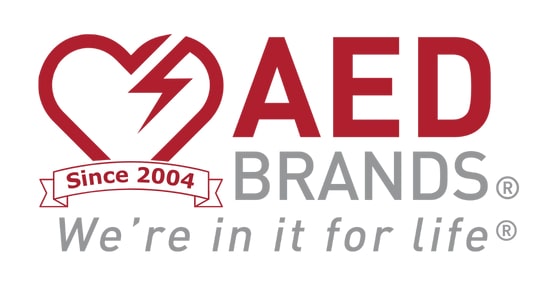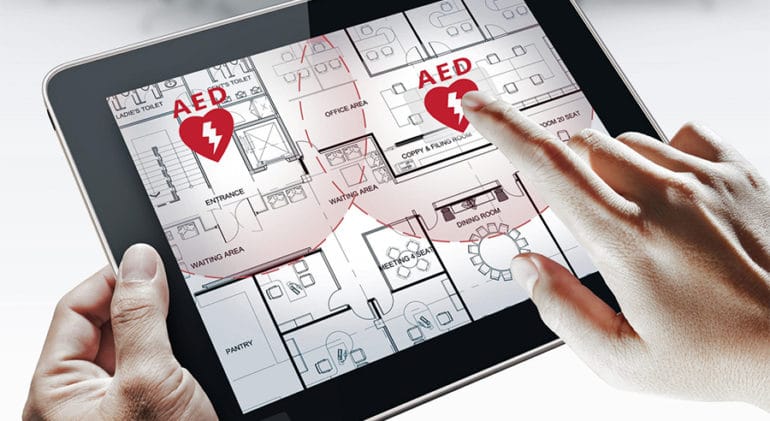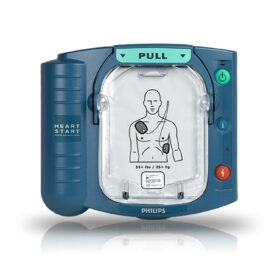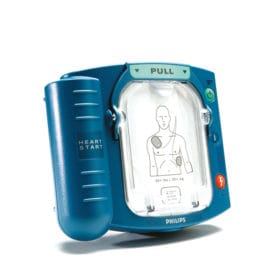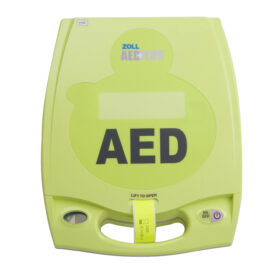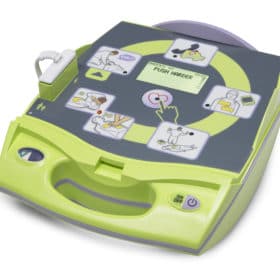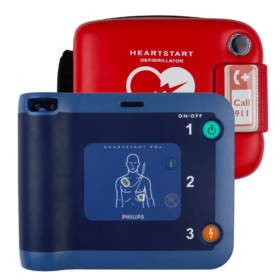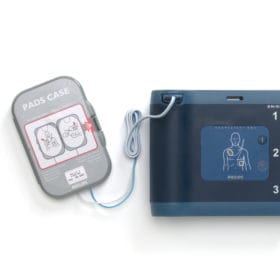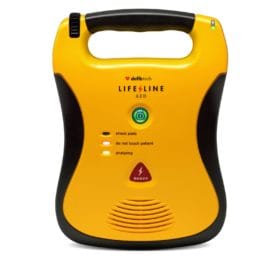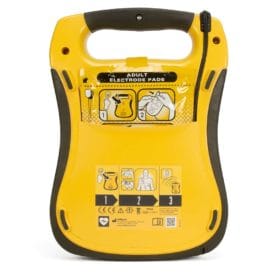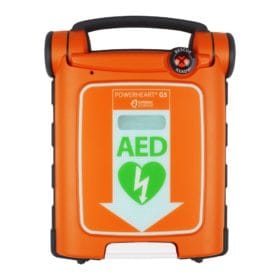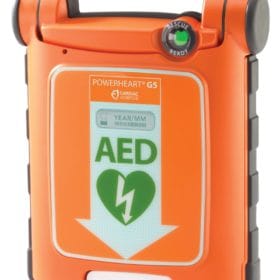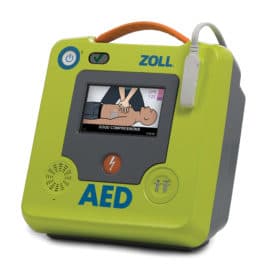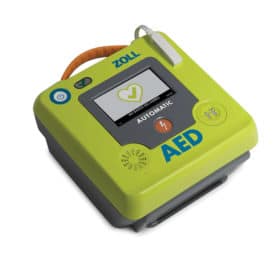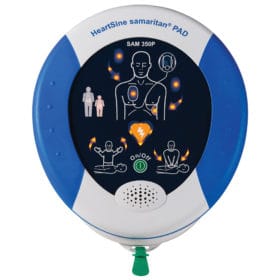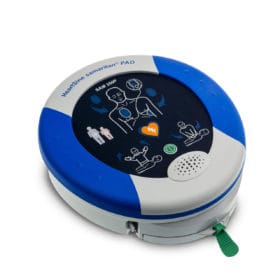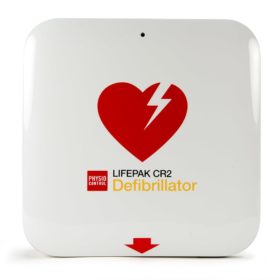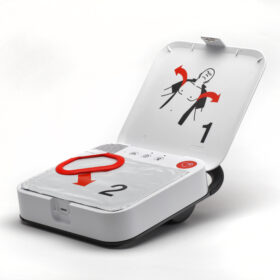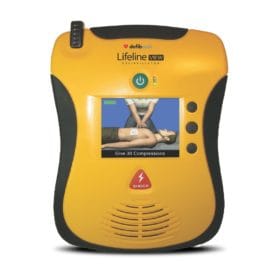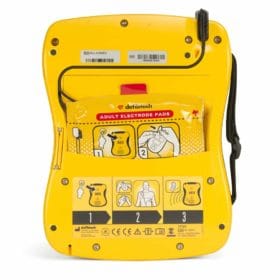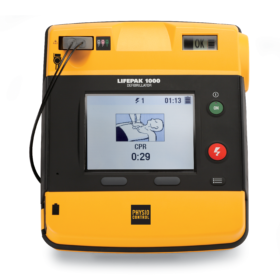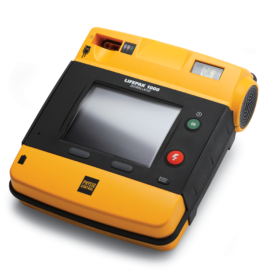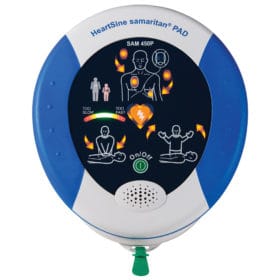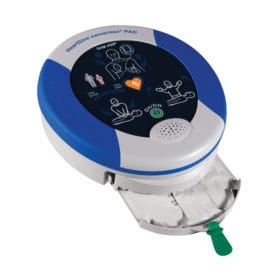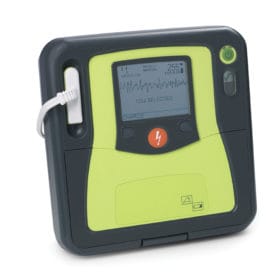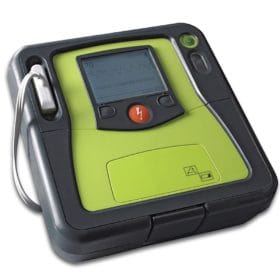- Your cart is empty
- Continue Shopping
When to Use AED in the Chain of Survival
The chances of a victim surviving a sudden cardiac arrest decrease seven to ten percent for each minute that passes without treatment. Follow these steps to increase your success rate.
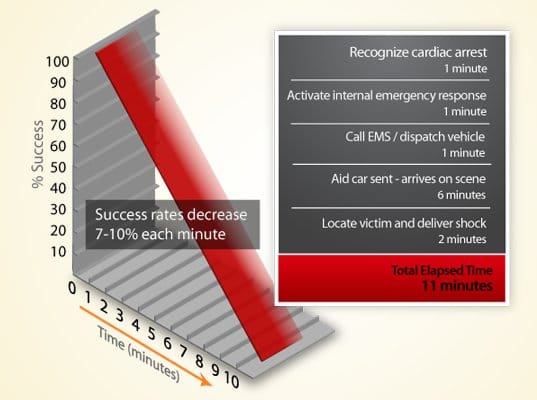
Step 1 - Sudden Cardiac Arrest Assessment
Sudden cardiac arrest (SCA) and heart attack both involve the malfunctioning of the heart, but the similarities end there. SCA can be a frightening and confusing situation when a person collapses and becomes unconscious. When sudden cardiac arrest occurs, the victim is experiencing an interruption in the normal electrical activity of the heart. This ventricular fibrillation must be stopped as soon as possible. If a person collapses and then stops breathing, SCA may be the cause. The time from collapse to an assessment of the medical situation can take at least one minute.
Step 2 - Call 911
If SCA is suspected, contacting emergency response services is vital and absolutely necessary for the victim’s survival; this can take at least one minute as well. The only way for ventricular fibrillation to be stopped is by using an automated external defibrillator (AED) to shock the heart and get it beating normally again (defibrillation).
Step 3 - Dispatch Fire/EMS
In ideal situations, the 911 operator will be able to dispatch emergency response units within one minute of the call coming in. However, by this time, at least three minutes have passed since the victim collapsed; chances of survival have dropped by as much as 30%.
Aid is sent.Typical emergency response times can take as long as ten to twenty minutes in many areas. If police are first on the scene, their cruisers may not be equipped with AEDs. Cardiopulmonary resuscitation (CPR) can help by delivering oxygen to the brain and blood flow to the heart but it cannot restart the heart’s normal rhythm and without a beating heart, a person cannot survive.
Step 4 - Locate Victim, Attach AED and Deliver Shock
If EMS responders reach the victim in a timely manner, it is hoped that they will be able to administer defibrillation, using an automated external defibrillator, within two minutes.
Note: Chances of survival from SCA decrease 10% for every minute that passes and if defibrillation does not occur within a five to ten minute window, the chances of a victim surviving are almost zero.
AED Brands has made it our goal to advocate for the placement of AEDs in all public gathering places (such as airports, sports arenas, health clubs, etc.) and schools, churches and office buildings. Thousands of people, some statistics estimate as many as 400,000, will die from sudden cardiac arrest this year. Join with us and help stop this deadly affliction from killing more people this year.
Loading...
The best AED for your needs
Philips HeartStart FRx AED with FREE Carry Case 861304
Would you like these results sent to your email?
If so, just fill our your email address below and submit.
